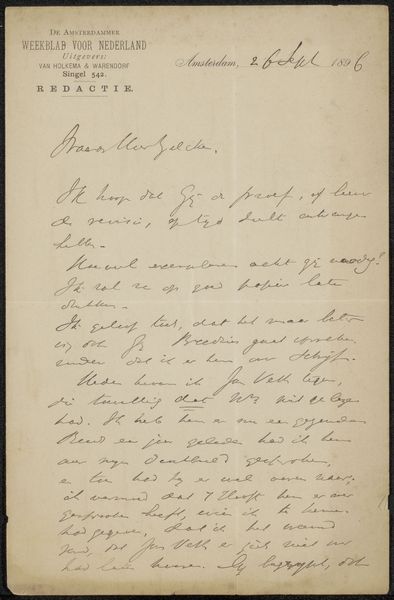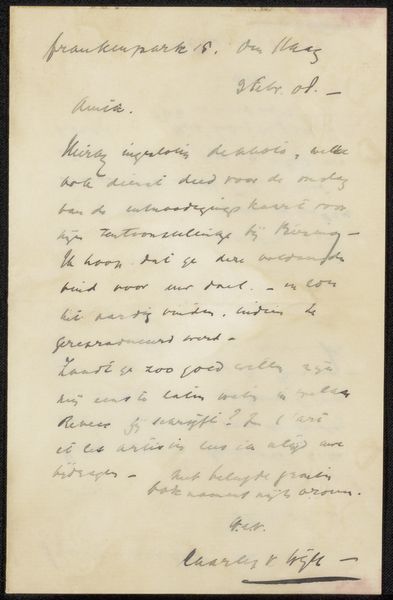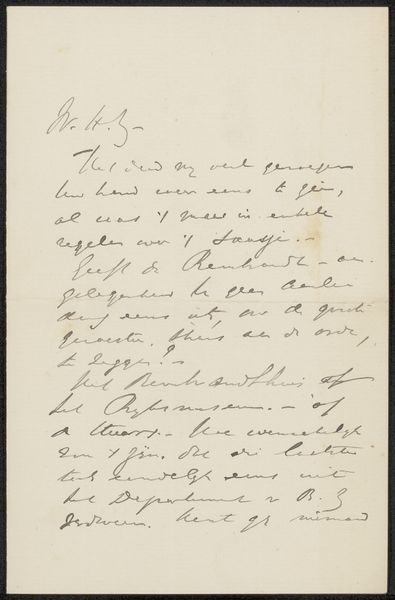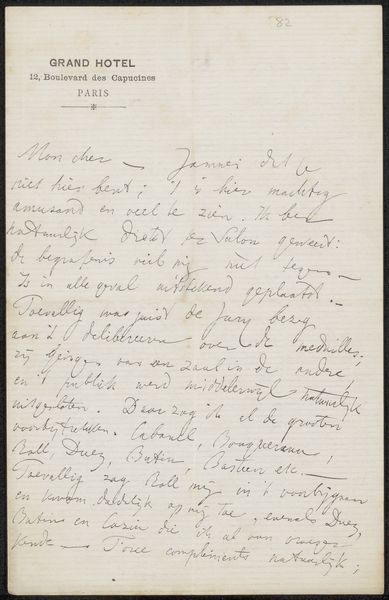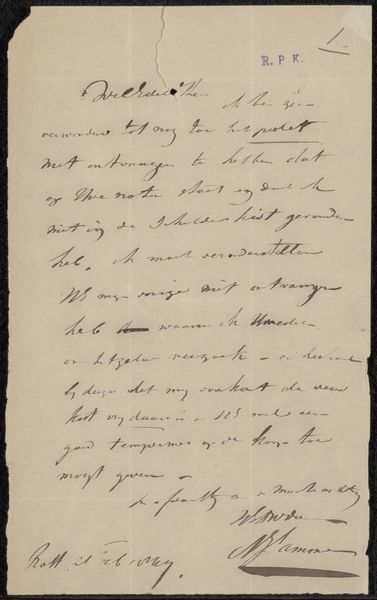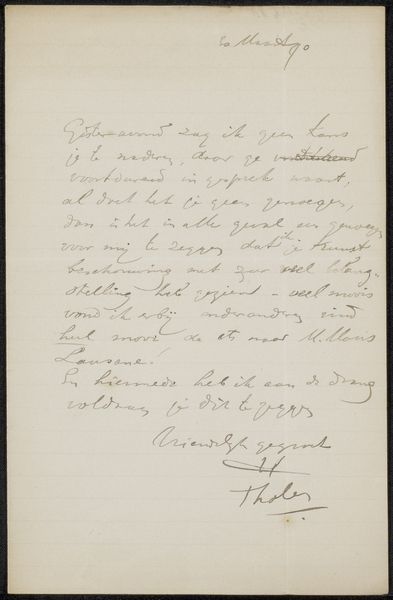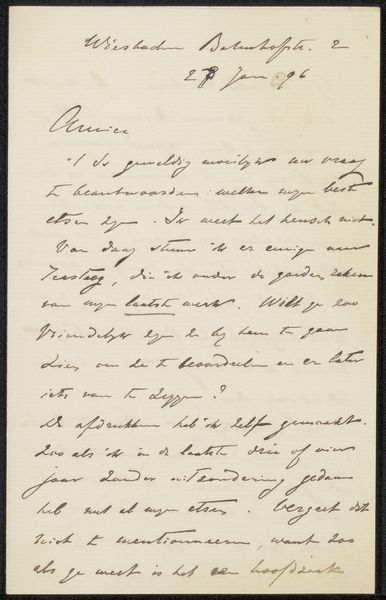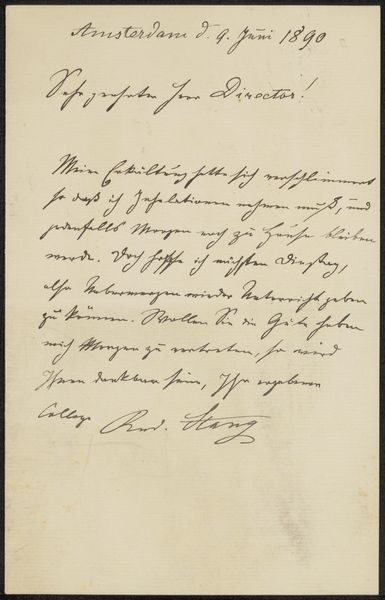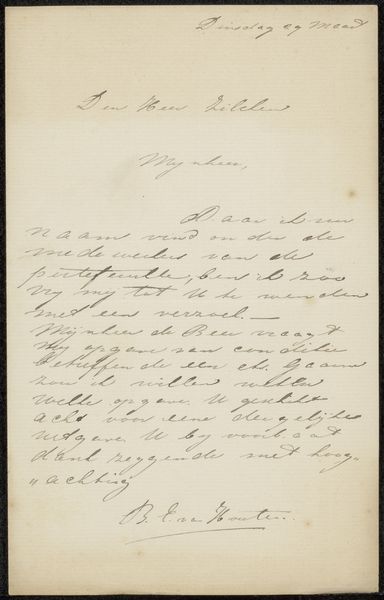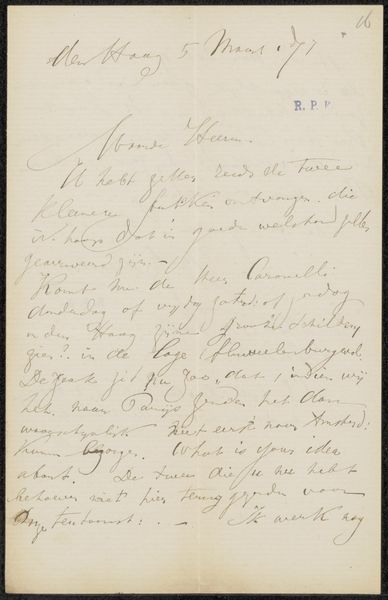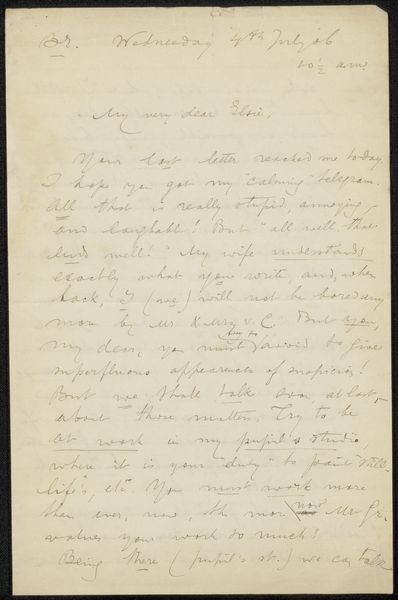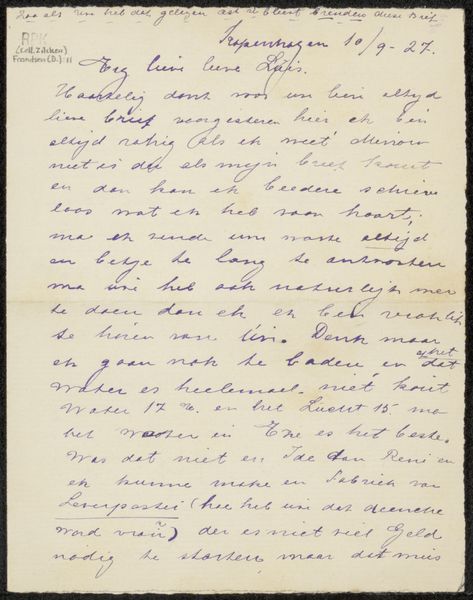
drawing, paper, ink, pen
#
drawing
#
paper
#
ink
#
pen
Copyright: Rijks Museum: Open Domain
Editor: This is a letter, "Brief aan Alberto Caramelli," dating from between 1842 and 1891, by Johannes Hubertus Leonardus de Haas. It's pen and ink on paper. Looking at the script, with its elegant curves and the slight fading of the ink, I feel a real sense of intimacy. How do you interpret the significance of a personal letter like this existing as a work of art in a public institution? Curator: That's a great observation. Consider this: private correspondence, especially from artists, provides invaluable insight into the cultural milieu of their time. This isn’t simply a note; it’s a potential window into de Haas’ artistic process, his relationship with his patron, and the broader art market. Are there any phrases or elements within the text that particularly capture your attention? Editor: The mention of "schilderij" – painting – seems important. It implies de Haas is discussing the transaction or delivery of artwork with Alberto Caramelli. Curator: Precisely! The seemingly mundane details—arranging delivery, discussing commissions—illuminate the economic realities artists navigated. Think about the patronage system of the 19th century. Wealthy individuals like Caramelli directly influenced what art was created and how it was circulated. This letter serves as a material document connecting artist, patron, and the societal structures that enabled artistic production. How do museums shape our understanding of pieces such as this? Editor: I see it now. The museum transforms a private document into a public artifact, prompting us to consider the social and economic factors impacting the artwork. Without this historical context, the letter would simply be handwriting on paper. Curator: Exactly. By exhibiting this letter, the museum participates in constructing the artist’s narrative and invites us to consider the complex relationship between art, commerce, and society. Editor: That’s really changed how I see this; it's not just a letter but a commentary on the art world itself. Curator: I agree. Every display, every acquisition decision is an argument being presented about art history.
Comments
No comments
Be the first to comment and join the conversation on the ultimate creative platform.
